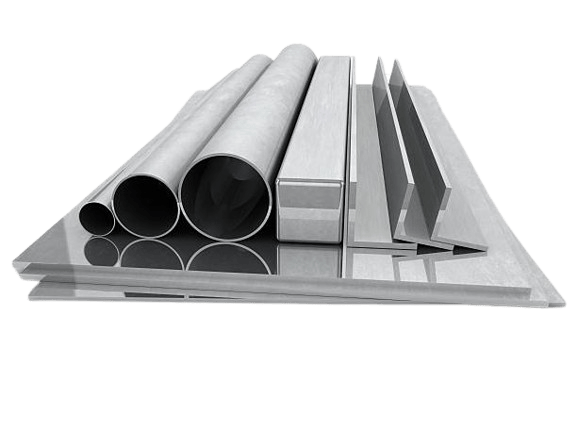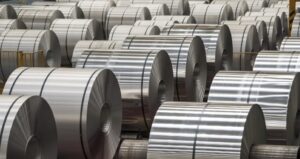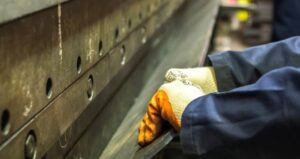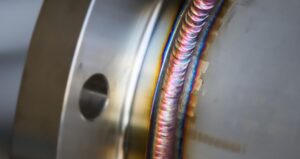Aluminum extrusion profile, also referred to as aluminum profile, undergoes an intricate manufacturing process to become a remarkable product. Within this blog, we aim to provide insights into our meticulous raw material selection and the production of high-quality aluminum profiles. As a dedicated professional aluminum profile manufacturer, our commitment is to familiarize you with our operations and enable you to acquire the finest products at the most competitive prices. Join us on this journey as we explore the artistry behind aluminum extrusion profiles and facilitate your informed decision-making process.
Raw Material Selection Is The Key

The selection of raw materials plays a pivotal role in the production of aluminum profiles. These profiles, characterized as long or shaped materials created through extrusion and stretching processes, rely on aluminum alloys as their base material. The primary raw materials involved in their manufacturing process include:

Aluminum Alloy
Aluminum alloys serve as the fundamental raw materials for aluminum profiles. Composed of aluminum along with elements such as copper, manganese, magnesium, and others, they possess exceptional properties including lightweightness, high strength, and corrosion resistance. The specific composition and proportions of aluminum alloys enable the production of aluminum extrusion profiles with diverse performance characteristics.
5083 Aluminum As Example
Aluminum (Al) | Silicon (Si) | Copper (Cu) | Magnesium (Mg) | Zinc (Zn) | Manganese (Mn) | Titanium (Ti) | Chromium (Cr) | Iron (Fe) |
Remaining Balance | ≤ 0.40 | ≤ 0.10 | 4.0 – 4.9 | ≤ 0.25 | 0.40 – 1.0 | ≤ 0.15 | 0.05 – 0.25 | 0 – 0.400 |
5083 aluminum is a marine grade aluminum widely recognized for its exceptional performance in marine environments. It belongs to the 5xxx series of aluminum alloys and is specifically designed to withstand harsh conditions, including exposure to saltwater and corrosive elements.
5083 aluminum exhibits high performance due to its specific composition. With aluminum as the base, it contains 4.0-4.9% magnesium for enhanced strength and corrosion resistance. Controlled amounts of silicon aid in casting, while limited copper content minimizes vulnerability to corrosion. Manganese (0.40-1.0%) improves strength and corrosion resistance, while titanium refines grain structure. Chromium (0.05-0.25%) enhances corrosion and oxidation resistance, and iron (0-0.400%) maintains desired properties.
As a professional marine grade aluminum manufacturer, we have the expertise to precisely control the composition of 5083 aluminum, ensuring optimized characteristics for superior performance in demanding marine environments.
Aluminum Oxide Powder

Also known as aluminum powder, aluminum oxide powder acts as an auxiliary raw material for aluminum extrusion profiles. It represents a refined form of aluminum and is used as a doping agent to enhance the heat resistance, corrosion resistance, and oxidation resistance of aluminum alloys. Additionally, it contributes to the improvement of mechanical strength and electrical conductivity within the profiles.
Core Process: Aluminum Profile Extrusion

The profile extrusion workshop serves as a pivotal hub for the aluminum profile extrusion process in aluminum manufacturing. Within the workshop, advanced extrusion machines and specialized equipment are employed to carry out precise profile extrusion. Highly skilled technicians and operators oversee the entire process, ensuring optimal results.
During profile extrusion processing, the workshop becomes a dynamic environment where raw materials, such as aluminum billets, are carefully prepared and fed into the extrusion machines. These machines, equipped with hydraulic rams or screw mechanisms, apply controlled pressure to the aluminum, forcing it through custom-designed dies. The dies shape and transform the aluminum into profiles with the desired cross-sectional dimensions and intricate details.
The workshop’s extrusion machines are meticulously calibrated to maintain precise control over critical factors, including temperature, pressure, and extrusion speed. This precision guarantees consistent and accurate profile shapes, dimensional accuracy, and excellent surface finishes.
Aluminum Extrusion Profile Quenching

Quenching and cooling are crucial steps in the aluminum extrusion process to achieve desired material properties. The cooling rate plays a significant role in determining the hardness of the aluminum profiles.
T4: Air Cooling + Natural Cooling
In this process, fans blow air onto the extruded profiles, promoting rapid heat dissipation. This method is commonly used for thin-walled components where a moderate level of hardness is required.
T5: Air Cooling + Aging
After air cooling, the profiles undergo an aging treatment. Aging involves subjecting the profiles to elevated temperatures for a specific duration to enhance their mechanical properties, such as strength and hardness. This process is employed to achieve a balance between strength and formability.
T6: Water Cooling + Aging
The profiles are immersed in a water tank for rapid cooling. Water cooling provides a much faster cooling rate, resulting in higher hardness. This method is often used for hard alloy materials or solid components where increased strength and rigidity are desired.
These different quenching and cooling methods, combined with subsequent aging treatments, allow US to control the material properties of the aluminum profiles, optimizing them for specific applications and requirements.
Step 4: Profile Processing

The processing steps involved in aluminum extrusion profile production include mold development, mechanical cutting, drilling, punching, and thread processing. Among these, mold development is a crucial aspect that determines the precision and cost of aluminum profile processing. Mechanical cutting, drilling, punching, and other operations require the use of various profile processing equipment such as sawing machines, milling machines, punching machines, drilling machines, and so on.
Final Step: Surface Treatment

The surface treatment processes for aluminum profiles mainly include spraying, anodizing, and electrophoretic coating. Surface treatment not only enhances the aesthetics of the profiles but also improves their corrosion resistance and wear resistance. Additionally, it can extend the service life of profiles in specific environments or applications.
Choose Aluminum Profile From Us

Select aluminum extrusion profile from Aluminum Land. As a aluminum profile manufacturer, we possess cutting-edge equipment and extensive expertise to fulfill your requirements. Opting for our services means selecting top-notch aluminum extrusion profiles at the most competitive prices. Our dedicated team guarantees both the quality and timely delivery of your ordered products.







